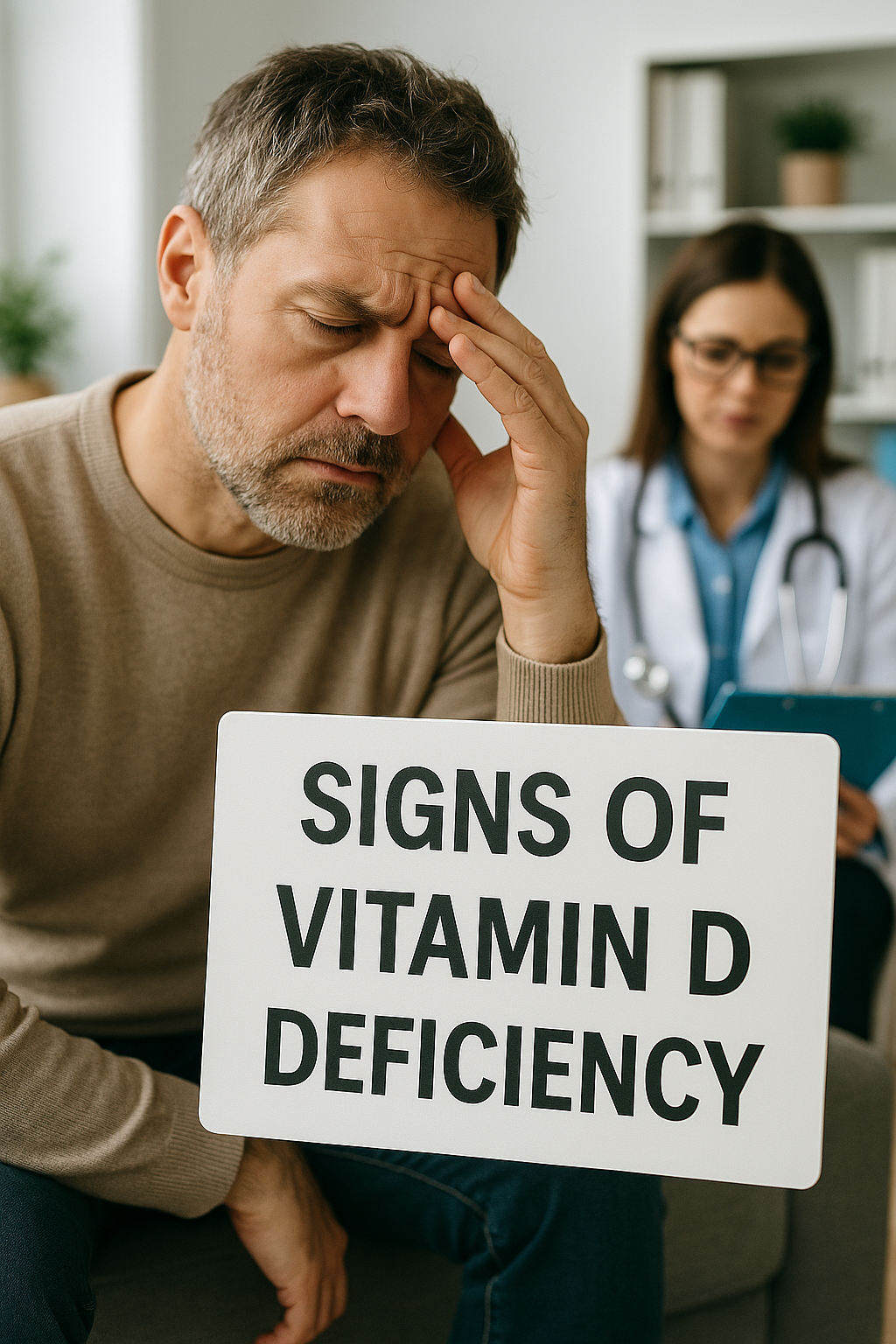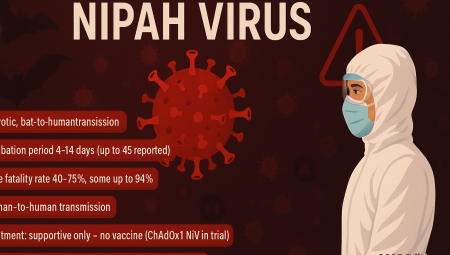What Is Vitamin D and Why Is It Important?
Vitamin D, often called the “sunshine vitamin,” is a fat-soluble vitamin essential for bone health, immunity, and mood regulation. Unlike other nutrients, your body produces vitamin D when your skin is exposed to sunlight.
It also plays a role in:
-
Calcium absorption
-
Muscle function
-
Inflammation reduction
-
Immune defense
Despite its importance, vitamin D deficiency is shockingly common—and often goes undetected until symptoms become serious.
How Common Is Vitamin D Deficiency?
Worldwide, an estimated 1 billion people have inadequate vitamin D levels. It’s especially prevalent in:
-
People with darker skin
-
Older adults
-
Those living in northern latitudes
-
People who spend most of their time indoors
-
Individuals with obesity or malabsorption disorders
Lack of sun exposure, modern lifestyles, and poor diets are key drivers of this silent epidemic.
15 Signs of Vitamin D Deficiency in Adults
Let’s break down the most common—and some surprising—symptoms:
-
Fatigue – Even after a full night’s sleep, low energy may persist.
-
Muscle Weakness – You may feel tired, achy, or struggle with physical activity.
-
Bone Pain – Especially in the lower back, hips, or ribs.
-
Depression or Low Mood – Vitamin D impacts serotonin levels and mood regulation.
-
Slow Wound Healing – Cuts, bruises, and surgical wounds may heal sluggishly.
-
Hair Loss – Often overlooked but linked to autoimmune issues and low vitamin D.
-
Frequent Illness or Infections – Low immunity, recurring colds, or flu.
-
Chronic Back Pain – Especially unexplained or persistent pain.
-
Weight Gain or Difficulty Losing Weight – Metabolic imbalance from deficiency.
-
Joint Pain and Stiffness – May mimic arthritis symptoms.
-
Brain Fog – Trouble concentrating, remembering things, or making decisions.
-
Pale or Sallow Skin – A possible outward sign of low levels.
-
Dizziness or Balance Issues – Particularly when combined with muscle weakness.
-
Sweaty Head – A common early sign, even with normal body temperature.
-
Low Immune Resilience – Slower recovery from illness or chronic low-grade inflammation.
If you experience several of these, it may be time to test your vitamin D levels.
Causes of Vitamin D Deficiency
Vitamin D deficiency doesn’t always stem from a poor diet—it often results from environmental and physiological factors, including:
-
Lack of Sun Exposure: Working indoors, living in northern regions, or consistently using sunscreen can limit your vitamin D synthesis.
-
Poor Diet: Few foods naturally contain vitamin D. People who avoid fortified foods or animal products may be at higher risk.
-
Obesity: Fat cells can trap vitamin D, making it less available in the bloodstream.
-
Gut Absorption Disorders: Conditions like Crohn’s, celiac disease, and IBS can impair nutrient absorption, including vitamin D.
Understanding the cause is key to effective treatment and long-term prevention.
Long-Term Health Risks If Left Untreated
Ignoring a vitamin D deficiency can have serious consequences over time:
-
Osteoporosis and Bone Fractures: Low vitamin D leads to poor calcium absorption, weakening bones.
-
Autoimmune Disorders: Increased risk of diseases like multiple sclerosis and rheumatoid arthritis.
-
Cardiovascular Issues: Some studies link deficiency to higher blood pressure and heart disease.
-
Chronic Inflammation: Low vitamin D may contribute to inflammatory diseases, including diabetes and obesity.
That’s why early detection and consistent management are critical.
How to Get Tested for Vitamin D Levels
To check your vitamin D status, ask your doctor for a:
-
25-hydroxyvitamin D test (25(OH)D): This blood test measures your vitamin D concentration and is the most accurate method.
When to test:
-
If you have any of the symptoms listed earlier
-
During winter months
-
If you belong to an at-risk group
A level below 20 ng/mL typically indicates deficiency, while 20–30 ng/mL is considered insufficient.
How to Correct a Deficiency Safely
Once diagnosed, deficiency can be corrected with the right approach:
-
Get Sunlight: Aim for 10–30 minutes of midday sun exposure, depending on skin type and location.
-
Eat Vitamin D-Rich Foods:
-
Fatty fish (salmon, mackerel)
-
Fortified milk and cereals
-
Egg yolks
-
Beef liver
-
-
Take Supplements: Your doctor may recommend vitamin D2 or D3 capsules, with dosages between 600–2,000 IU per day—or more for severe deficiencies.
Consistency is key, as vitamin D levels take weeks or months to normalize.
Optimal Daily Vitamin D Intake for Adults
General recommendations (per day):
| Group | Recommended Intake |
|---|---|
| Adults (18–70 yrs) | 600–800 IU |
| Adults 70+ | 800–1,000 IU |
| Deficiency treatment | Up to 5,000 IU (short-term, under medical advice) |
Always follow your healthcare provider’s guidance when supplementing.
FAQs About Vitamin D Deficiency
Q1: Can I get enough vitamin D from food alone?
Unlikely. Most people need sunlight or supplements to meet their needs.
Q2: Is too much vitamin D harmful?
Yes. Excessive supplementation can lead to toxicity and kidney issues—never exceed prescribed limits.
Q3: What’s better—vitamin D2 or D3?
D3 is generally more effective and longer-lasting in raising blood levels.
Q4: Does sunscreen block vitamin D production?
Yes, but it’s still essential for skin protection. Balance sun exposure responsibly.
Q5: Can I be deficient even if I go outside daily?
Yes, especially if you’re fully clothed, wear sunscreen, or live far from the equator.
Conclusion: Don’t Ignore the Warning Signs
Vitamin D is vital to your bones, brain, mood, and immunity. If you’ve been feeling off—exhausted, achy, or mentally foggy—it might not be just stress or aging.
Recognizing the signs of vitamin D deficiency in adults and taking action early can transform your health and energy. Don’t wait for a crisis—get tested, supplement wisely, and step into the sunshine.
🔗 External Resource: NIH Office of Dietary Supplements – Vitamin D



